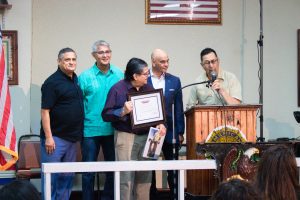
NASA has issued a concerning warning: an asteroid larger than the Empire State Building is hurtling towards Earth on a direct trajectory. Known as Bennu, this colossal space rock, estimated to be 4.5 billion years old, is anticipated to perform a close flyby in the year 2182. Despite NASA’s assertion that the likelihood of a collision is only 0.05 percent, the agency is actively working on contingency plans for this potentially catastrophic scenario.
In a groundbreaking maneuver in October 2022, NASA conducted its inaugural Double Asteroid Deflection Test (DART), successfully diverting the trajectory of the asteroid Dimorphos by deliberately impacting it with a spacecraft. This week, scientists revealed astonishing findings: the shape of Bennu has undergone a remarkable transformation. Shantanu Naidu of NASA’s Jet Propulsion Laboratory described the alteration, noting that Bennu has shifted from a relatively symmetrical object to a “triaxial ellipsoid,” resembling an elongated watermelon.
This isn’t NASA’s first encounter with Bennu. Since its discovery in 1999, Bennu has made at least six close approaches to Earth. Notably, in September 2023, the OSIRIS-REx spacecraft returned to Earth after a seven-year odyssey spanning nearly 3.9 billion miles. Its mission? To collect samples from Bennu’s surface, offering insights into asteroid deflection strategies and shedding light on solar system formation.
An alarming observation was made in 2019 when Bennu was seen ejecting particles from its surface. Further analysis by scientists at the University of Arizona revealed intriguing compositions on Bennu, including magnesium phosphate and glycine—components crucial for life on Earth. Additionally, water-bearing minerals and phyllosilicates suggest Bennu may have originated from an ocean-covered world conducive to life.
Samples collected from Bennu are now on public display in Texas, Arizona, and Washington, D.C. Meanwhile, the OSIRIS-REx spacecraft has embarked on a new mission to investigate the asteroid Apophis, rechristened OSIRIS-APEX.
As NASA continues its meticulous study of Bennu and its implications for Earth, uncertainties loom. Tim McCoy of the Smithsonian’s National Museum of Natural History emphasizes that much remains unknown, underscoring the urgency of ongoing research efforts.









